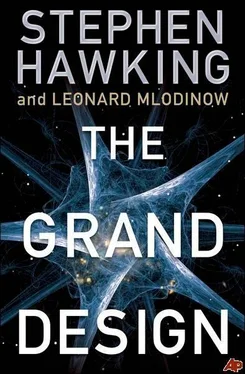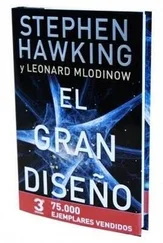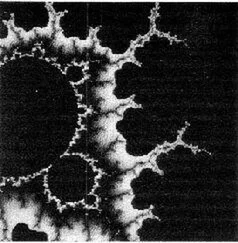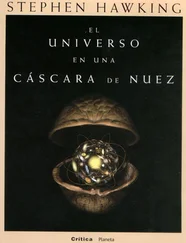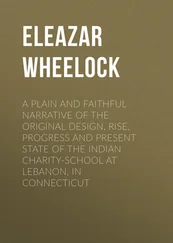It is possible to turn that last statement into a scientific principle: Our very existence imposes rules determining from where and at what time it is possible for us to observe the universe. That is, the fact of our being restricts the characteristics of the kind of environment in which we find ourselves. That principle is called the weak anthropic principle. (We’ll see shortly why the adjective “weak” is attached.) A better term than “anthropic principle” would have been “selection principle,” because the principle refers to how our own knowledge of our existence imposes rules that select, out of all the possible environments, only those environments with the characteristics that allow life.
Though it may sound like philosophy, the weak anthropic principle can be used to make scientific predictions. For example, how old is the universe? As we’ll soon see, for us to exist the universe must contain elements such as carbon, which are produced by cooking lighter elements inside stars. The carbon must then be scattered through space in a supernova explosion, and eventually condense as part of a planet in a new-generation solar system. In 1961 physicist Robert Dicke argued that the process takes about 10 billion years, so our being here means that the universe must be at least that old. On the other hand, the universe cannot be much older than 10 billion years, since in the far future all the fuel for stars will have been used up, and we require hot stars for our sustenance. Hence the universe must be about 10 billion years old. That is not an extremely precise prediction, but it is true-according to current data the big bang occurred about 13.7 billion years ago.
As was the case with the age of the universe, anthropic predictions usually produce a range of values for a given physical parameter rather than pinpointing it precisely. That’s because our existence, while it might not require a particular value of some physical parameter, often is dependent on such parameters not varying too far from where we actually find them. We furthermore expect that the actual conditions in our world are typical within the anthropically allowed range. For example, if only modest orbital eccentricities, say between zero and 0.5, will allow life, then an eccentricity of 0.1 should not surprise us because among all the planets in the universe, a fair percentage probably have orbits with eccentricities that small. But if it turned out that the earth moved in a near-perfect circle, with eccentricity, say, of 0.00000000001, that would make the earth a very special planet indeed, and motivate us to try to explain why we find ourselves living in such an anomalous home. That idea is sometimes called the principle of mediocrity.
The lucky coincidences pertaining to the shape of planetary orbits, the mass of the sun, and so on are called environmental because they arise from the serendipity of our surroundings and not from a fluke in the fundamental laws of nature. The age of the universe is also an environmental factor, since there are an earlier and a later time in the history of the universe, but we must live in this era because it is the only era conducive to life. Environmental coincidences are easy to understand because ours is only one cosmic habitat among many that exist in the universe, and we obviously must exist in a habitat that supports life.
The weak anthropic principle is not very controversial. But there is a stronger form that we will argue for here, although it is regarded with disdain among some physicists. The strong anthropic principle suggests that the fact that we exist imposes constraints not just on our environment but on the possible form and content of the laws of nature themselves. The idea arose because it is not only the peculiar characteristics of our solar system that seem oddly conducive to the development of human life but also the characteristics of our entire universe, and that is much more difficult to explain.
The tale of how the primordial universe of hydrogen, helium, and a bit of lithium evolved to a universe harboring at least one world with intelligent life like us is a tale of many chapters. As we mentioned earlier, the forces of nature had to be such that heavier elements-especially carbon-could be produced from the primordial elements, and remain stable for at least billions of years. Those heavy elements were formed in the furnaces we call stars, so the forces first had to allow stars and galaxies to form. Those grew from the seeds of tiny inhomogeneities in the early universe, which was almost completely uniform but thankfully contained density variations of about 1 part in 100,000. However, the existence of stars, and the existence inside those stars of the elements we are made of, is not enough. The dynamics of the stars had to be such that some would eventually explode, and, moreover, explode precisely in a way that could disburse the heavier elements through space. In addition, the laws of nature had to dictate that those remnants could recondense into a new generation of stars, these surrounded by planets incorporating the newly formed heavy elements. Just as certain events on early earth had to occur in order to allow us to develop, so too was each link of this chain necessary for our existence. But in the case of the events resulting in the evolution of the universe, such developments were governed by the balance of the fundamental forces of nature, and it is those whose interplay had to be just right in order for us to exist.
One of the first to recognize that this might involve a good measure of serendipity was Fred Hoyle, in the 1950s. Hoyle believed that all chemical elements had originally been formed from hydrogen, which he felt was the true primordial substance. Hydrogen has the simplest atomic nucleus, consisting of just one proton, either alone or in combination with one or two neutrons. (Different forms of hydrogen, or any nucleus, having the same number of protons but different numbers of neutrons are called isotopes.) Today we know that helium and lithium, atoms whose nuclei contain two and three protons, were also primordially synthesized, in much smaller amounts, when the universe was about 200 seconds old. Life, on the other hand, depends on more complex elements. Carbon is the most important of these, the basis for all organic chemistry.
Though one might imagine “living” organisms such as intelligent computers produced from other elements, such as silicon, it is doubtful that life could have spontaneously evolved in the absence of carbon. The reasons for that are technical but have to do with the unique manner in which carbon bonds with other elements. Carbon dioxide, for example, is gaseous at room temperature, and biologically very useful. Since silicon is the element directly below carbon on the periodic table, it has similar chemical properties. However, silicon dioxide, quartz, is far more useful in a rock collection than in an organism’s lungs. Still, perhaps life-forms could evolve that feast on silicon and rhythmically twirl their tails in pools of liquid ammonia. Even that type of exotic life could not evolve from just the primordial elements, for those elements can form only two stable compounds, lithium hydride, which is a colorless crystalline solid, and hydrogen gas, neither of them a compound likely to reproduce or even to fall in love. Also, the fact remains that we are a carbon life-form, and that raises the issue of how carbon, whose nucleus contains six protons, and the other heavy elements in our bodies were created.
The first step occurs when older stars start to accumulate helium, which is produced when two hydrogen nuclei collide and fuse with each other. This fusion is how stars create the energy that warms us. Two helium atoms can in turn collide to form beryllium, an atom whose nucleus contains four protons. Once beryllium is formed, it could in principle fuse with a third helium nucleus to form carbon. But that doesn’t happen, because the isotope of beryllium that is formed decays almost immediately back into helium nuclei.
Читать дальше
